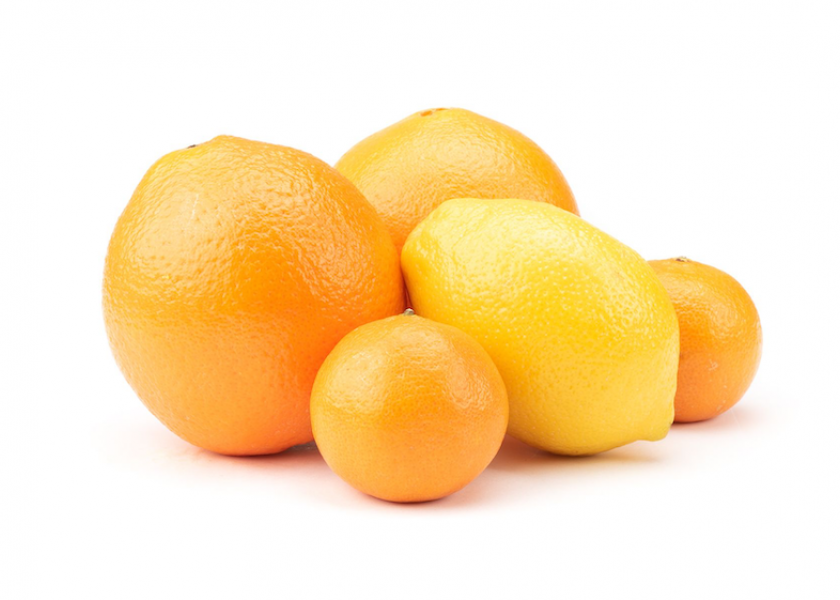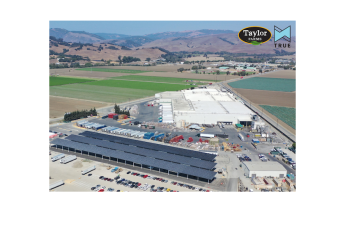California citrus output projected lower

California citrus production will take a step back in the 2021-22 season, government reports indicate.
The U.S. Department of Agriculture’s Pacific Regional Office in September predicted navel orange production in California for 2021-22 at 70 million 40-pound cartons, down 14% from the previous year. According to that report, the forecast decrease in production is most likely due to a reduction in fruit set and size, and, to a lesser extent, bearing acreage.
The first official production estimate for the U.S. citrus crop will be released by the USDA later in October.
In 2020-21, the USDA reports that there was a decrease in total bearing acreage of California citrus of 2,000 acres, or less than 1%, compared with the previous season. The decline was attributed to reduced navel and valencia orange acreage, the USDA said. At 7,300 acres, bearing acreage in Arizona remained steady in 2020-21 compared with the previous season.
2020-21 recap
The USDA said U.S. 2020-21 citrus production was below initial forecasts, mostly due to a lower than anticipated valencia orange crop in Florida and navel orange crop in California.
The USDA said there were reductions in both the processing and fresh orange crops, with total orange production split evenly between these markets.
Despite a “robust” tangerine crop, the USDA said California experienced declines in orange, grapefruit, and lemon production in 2020-21, with an overall reduction of 3% compared with the previous season.
Arizona experienced a major reduction in lemon production in 2020-21, decreasing more than 55% compared with 2019-20.
U.S. citrus production for the fresh market was estimated at 3.45 million tons in 2020-21, down 6% from the previous season, with smaller fresh-market crops of oranges (down 11%), grapefruit (down 15%), and lemons (down 6%). Representing just under half of all U.S. citrus production for the fresh market, the fresh-market orange crop decreased from the previous season to 1.68 million tons due to smaller crops in California, Florida and Texas, the USDA said.
However, with a supply contraction and robust demand, prices increased, the USDA said.
Overall, the average equivalent-on-tree price for a box of fresh oranges increased from $16.57 in 2019-20 to $21.43 in 2020-21 due to higher prices in September through May. Furthermore, lower exports this season (a decrease of 8%) are indicative of higher domestic demand.
Exports to South Korea, Canada and Hong Kong (the top three export markets for U.S. oranges) were down by 12%, 15%, and 20%, the USDA said.
Florida led other states in grapefruit production in 2020-21, with Florida growers producing a combined 174,000 tons for the fresh and processed markets. California came in second, producing 156,000 tons, while Texas was third at 96,000 tons.
Lower production levels of grapefruit in California in the 2020-21 season —a decrease of 17% (800,000 boxes) — can mostly be attributed to prolonged drought in the San Joaquin Valley, the USDA said.
At 884,000 tons, the U.S. lemon crop in 2020-21 was the lowest in five years.
Eighty percent of the lemon crop (710,000 tons) went to the fresh market, a 6% decrease in quantity from 2019-20, the USDA said.
Although most U.S. lemons are grown in California, Arizona growers typically supply about 5% of the
crop. Both California and Arizona had smaller crops this year, with a 2% volume decline in fresh market lemons in California and a 50% volume decline in the same category in Arizona, the USDA said.
The large decrease in the Arizona crop can be attributed to higher fruit drop and lower sizing than expected, as well as the decreasing yields among aging lemon groves in the state. The sizing and drop issues in Arizona this season can be attributed to near-record high temperatures in the Yuma valley during spring 2020, when the future 2020-21 lemon crop was highly susceptible to heat damage.
The shorter lemon crop led to an increase in lemon imports of 22% and a 16% decrease in U.S. exports, the USDA said.
Meanwhile, production of U.S. tangerines, mandarins and tangelos (included as tangerines) for the fresh market reached its second-highest level in 50 years at 788,000 tons this season due to a larger crop in California, the USDA said.
Imports of tangerines were down slightly in the 2020-21 season — 3% — from last season’s record high, with 835 million pounds imported primarily from Chile, Peru and Morocco. Exports of fresh tangerines were up this year, with a 9% (10-million-pound) increase from 2019-20.
Canada, Japan and Mexico remained the three largest export markets for U.S.-grown tangerines. Near-record high domestic production this season led to the highest-per-capita availability of tangerines on record of 6.95 pounds.
Fresh per capita rise
Total availability of fresh citrus (oranges, lemons, limes, grapefruit and tangerines), which is a proxy for consumption, peaked at a record 8,861 million pounds in the 2019-20 season, after which it only slightly decreased to 8,856 million pounds in 2020-21.
Per capita availability of fresh citrus fruit increased by 7% between 2018-19 and 2020-21 to 26.7 pounds in 2020-21, the second-highest per capita availability in 37 years, which may suggest increased purchases of these fruits during the pandemic. Imports accounted for a record 36% of availability during the 2020-21 season, with imports of limes alone accounting for nearly half (48%) of all fresh citrus imports, followed by tangerines (45%) and oranges (13%).







